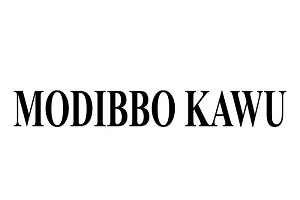DESERT life is very grey, drab and pitiless. The days and nights can be very cold an d punishingly windy. This is the world that humans have habituated for aeons. The desert has been mastered by its dwellers; they humanized it and as we know, human civilizations have flourished in the deserts o f our world. In Africa, the greatest of these deserts is the Sahara. The people of the Western Sahara have lived in and humanized the desert for millennia. Today they are fighting a new war for the humanization o f the desert, as refugees. On Algerian land, but at the edge of their own patch of desert life Saharawi refugees are living a life of longing and determination to return to their ….country, in the desert of Western Sahara.
It is not an easy life and must not be romanticized. Nevertheless, the stubborn persistence of hope is at the heart of existence for the Saharawi people in these grey environments, to take up arms for liberation is the height of commitment to a homeland, even when the odds seem so insurmountable and the enemy is like a giant. That is what the Saharawi people have done. Years after a ceasefire was agreed, they have held tightly to hope that no matter how long the night of occupation, it will give way to the light of the day o f liberation. The Western Sahara will be free and its people will re-possess their patch of the huge Sahara desert and go back to re-humanizing it and creating realization just as their ancestors have done thousands of years.
Then there is something unspoken hut is implicit in the lives of people in danger or are undepoccupation: they use vibrant colours to express a stubbornness that rejects the conditions of their oppression. The desert is drab, uniformly grey and unattractive, at least for an external observer. That feeling persists, until you notice the vivid and vibrant colours that its people wear. It cannot just be a coincidence. The vivid colours contrast very sharply against the drab which envelopes the lives of the peoples of the Sahara. It is clear to this reporter that the colours represent the eternity of life; the defiance o f the conditions o f existence and in a deeply nuanced manner, speak to the humanity of the peoples of the Sahara.
As part of the festivities to commemorate the 34th anniversary of the declaration of the independence of the Saharawi Arab Democratic Republic, the refugees received 12 human rights activists from the Moroccan-occupied areas of the Western Sahara. It was a big event which drew the young and the old. The event was significant, because the visiting 12 have put themselves at risk with the Moroccan occupation authorities by daring to visit the refugees’ camps in southern Algeria. As these events usually go, they were an expression of the political as well as profoundly human occasions as well. Those in the camps are to run from the realities of their homeland.
For many o f the young, the only life they have known has been constructed within the inhuman setting of refugees’ camps. The homeland is far away yet it is also within them and all about them. The camps have been named after major towns andprincipalities of Western Sahara, and the assumption underlining that is that after the attainment of independence, the people will be able to return to those places.
That was why the visit of the 12 human rights activists from the occupied areas became both a celebration and an expression of defiance. The walls the Moroccans built have cut off the refugees from their homes, but the walls are useless. They cannot cut off the hearts and the longings in those hearts. The distances are longer than ever, but human determination to be free has reduced, and in fact, removed the distances.
The meeting of solidarity is therefore an expression of the determination to be free as well as a defiance of tyranny and occupation. Armies and weapons are useless in the long run, because they cannot defeat a people determined to achieve independence and freedom, no matter how long that takes.
Like waves in the sea, generations of fighters are born and they carry the collective burden of remembrances and resolve to achieve independence. In the refugees’ camps of Western Sahara, that much we caught a whiff of, and more instructively, were the vivid and vibrant colours which reflect a humanization of the drabness of desert life as well as the profoundly human desire to be free and to live just like you and me in a country they can call their own.
That country is in the desert but its people love their desert and have made generations of sacrifices to re-possess it and continue to humanize it as their ancestors did forthousands o f years before colonialism and then the Moroccan occupation. When you behold these vibrant colours o f the desert, you get the impression that freedom will come to its people because they deserve it and have always fought for it!


